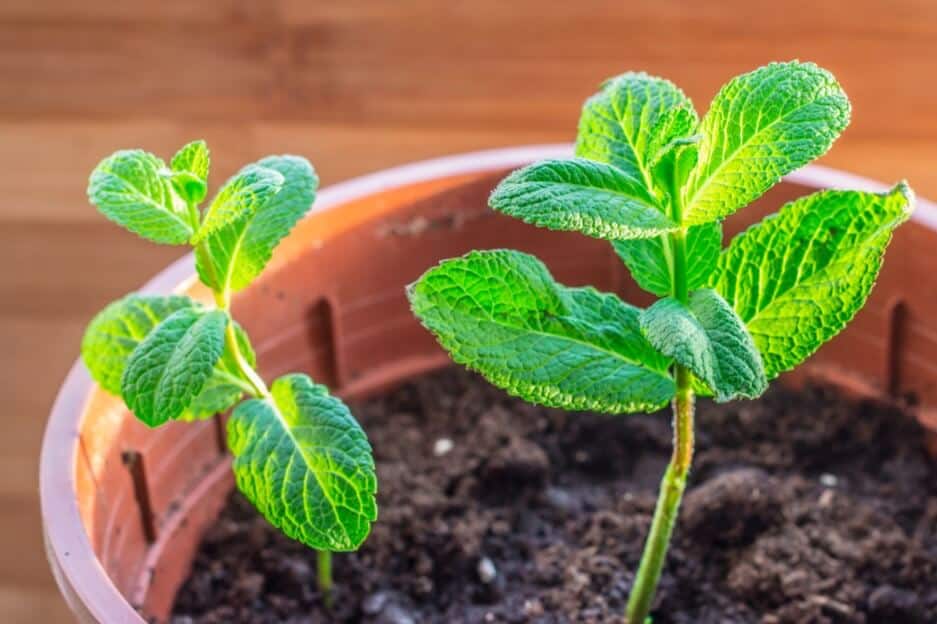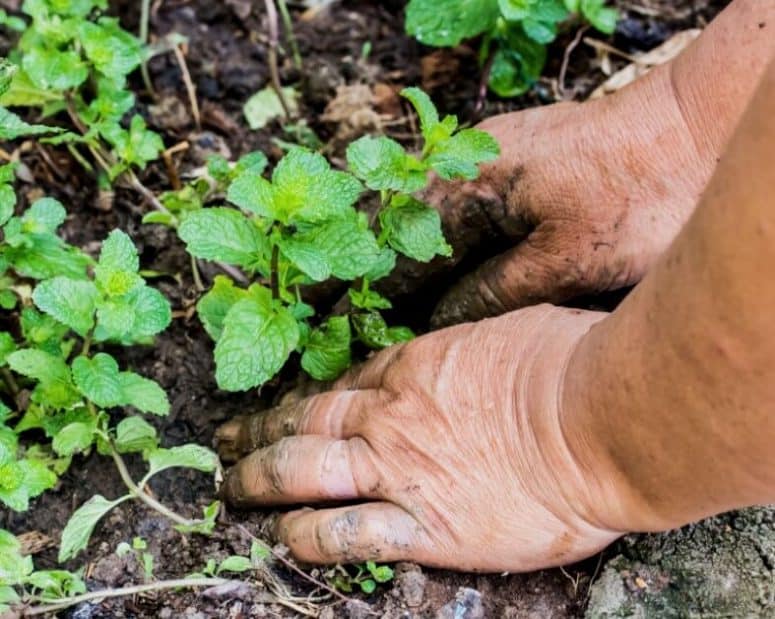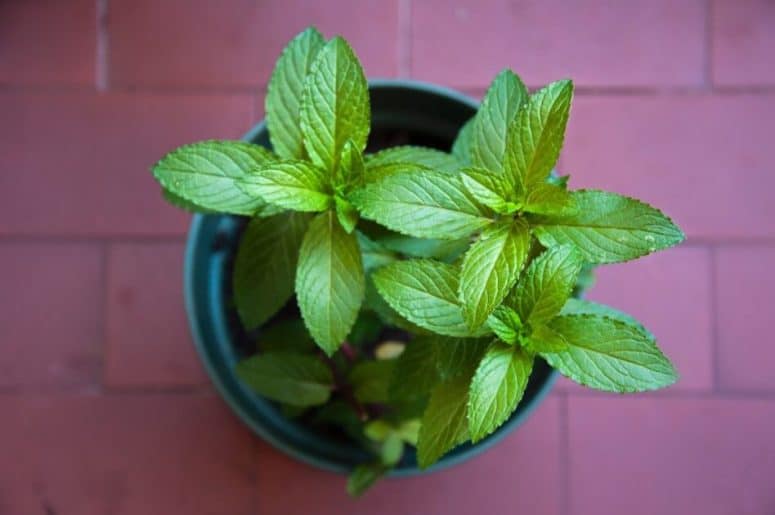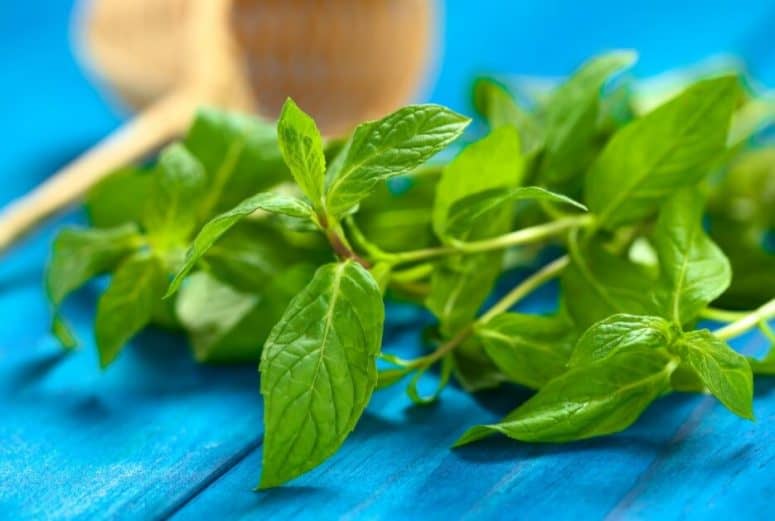How to Grow Mint At Home (A Beginner Guide)

This page is going to discuss the most popular herbs of all: mint. I believe every single one of you has known the scent and taste of mint. Its cool sensation in our mouth and soothing feeling in our stomach is so typical of mint.
Mint itself is a herb plant that has some other species and varieties in the herbs family. Several mint varieties are commonly used by people, such as Peppermint, Spearmint, and Curly mint.
However, spearmint and curly mint are the most common type of mint used for culinary purposes.
Even so, peppermint, apple mint, orange mint, or chocolate mint also existed and was often used as a flavor.
Benefits of Mint
As a herb, mint matches perfectly in many food or drinks, either savory or sweet. For example, mint complements the fatty taste of lamb and poultry, which could also be applied as a sauce in a dish.
In a drink, any drink could match the taste of mint; you name it. The menthol sensation from peppermint is very common in drinks and even ice cream flavors.
Mint, of course, also has so many health benefits. As a calming herb, mint could manage gastrointestinal problems. The contained antioxidant and anti-inflammatory is also useful to handle allergic and cold symptoms. It’s very soothing.
Additionally, mint has vitamins, minerals, and minimum calories. Therefore, adding mint to your salad or dish sauced is recommended for diet purposes. However, remember not to over-consume anything because anything too much won’t do you right.
Well, are you ready to experiment and complement your dish with this famous and beneficial herb?
Having mint grown in your house is going to be one gardening activity you won’t regret. It saves money, and it benefits your cooking.
Also, growing mint won’t be a big issue, even for a green thumb beginner. Mint is one of the easiest herbs to grow. Here is the ultimate guide on how to grow mint at home.
How to Grow Mint
Among all the mint varieties, there are two most common ways to grow it: planting it from seed and cutting.
Planting mint from seeds means sowing the source from the first step and waiting for a couple of times to germinate.
As for mint, you will need a Bio Sponge and Bio-Dome for better and more structured growth. Those are some containers to grow mint from seed.
Growing mint from seed requires you to keep the seed open instead of covered by soil or anything. Mint seeds need light to germinate, and the sprout is going to grow after around 15 days.
After that, you can transplant the sprout and the seed into a container for indoor or a garden for outdoor planting.
Meanwhile, growing mint from cutting or planting from existing plants means producing the stem from the previously grown mint plants that are usually available in nurseries or any grade centers.
If you want to have a more comfortable and faster way, you’d better grow mint from cuttings.
That is because mint is an invasive herb where it could grow bushy everywhere and take over your garden fast. That way, you can harvest your mint more from a well-grown mint plant previously.
Indoor or Outdoor?
The good news is, you can plant mint indoors, although it grows fast. Growing mint indoors requires a very bright and sunny spot.
Yes, mint tolerates partial shades outside in the garden. However, planting mint inside is better with more light because the window has blocked the sun’s full quality in the first place.
Also, you can plant mint in the water or hydroponically. However, planting mint in the water requires professional knowledge.
Otherwise, your mint could not live longer and eventually be yellow and dead. As for hydroponic, you can try growing it in hydroponic tools as you plan other hydroponic plants.
Meanwhile, planting mint outdoor require you to space the mint plant with other plants. Please give it a personal space because once your mint has grown so well and you start to harvest, it’s going to grow very bushy everywhere. What’s good with that is you can have so many mints leaves to gather for the next period effortlessly.
Soil
Growing mint is in rich and moist soil is very recommended. Besides, a slightly acidic pH, around 6.5 and 7.0, in your soil could trigger better mint growth.
Remember to have enough qualified soil around 24 inches in your garden for mint because mint is very invasive.
Light
Outdoor, mint prefers partial shade. You can grow it in full sun, though. But you need to be very aware to water it frequently. What’s good about this is that you do not have to worry about the shade that might block the sunlight.
However, planting it indoors still requires you a very sunny place because direct light and indoor light have a different effect on mint.
Water
Mint loves moist soil and adequate drainage. Like other herbs, you cannot waterlog mint. Water your mint frequently once the soil feels dry already.
The recommended time to water mint is in the morning. That way, your mint will be moisture enough by the afternoon when the temperature is getting very sunny.
Temperature
As we know, mints have that cool and soothing sensation when we consume them. Not only the sensation, but mints are also able to withstand cold temperatures.
Planting mints indoors require you to have enough humidity in the room. You can achieve enough humidity by having a humidifier in the room, misting the plant between the watering time, or placing the container on a tray with water and pebbles underneath.
Fertilizer
You can fertilize mint every six weeks with liquid fertilizer or aged compost in the soil if you please. Some people consider it risky to fertilize mints due to fear of losing the mint’s sensitive fragrance.
Harvesting
Since mint is a fast-growing plant, you can harvest the leaves with the stem once the stem has reached 6 or 8 inches. If you grow it from seed, you shall wait until two months to harvest.
Never harvest mint more than one-third of the whole plant. You can weaken the plant and stop them from growing instead of triggering more growth if you do.
Speaking of cutting mint leaves, you must do the regular trimming of mint to encourage new bushy growth. Trim the back of the stem once every couple of weeks, and you can use the fringe in the kitchen for your need.
Troubleshooting the Pest
Mint is vulnerable to spider mites, whiteflies, blackflies, snails, and slugs with its green leaves and fragrant smells. Additionally, mint also happens to have an orange spot underneath the leaves for some cases.
Troubleshooting could be done by using organic fungicide between watering. This way, you would not only get rid of the mildew but also those insects.
Conclusion
Finally, mint is a very versatile herb to grow at home. As a beginner, it must be easy for you to plant mint from cutting or seed. Mint’s seed is relatively easy to germinate, and growing it from cuttings is very easy.
Water the soil regularly in the morning to keep it moist in the afternoon when the sun hits the plants. Never waterlog mint. Otherwise, you see your mint stop growing and die.
Mint loves partial shade and could tolerate it as well. But if you plant it indoors, you still have to place it in a sunny spot.
Make sure to have space in your container and garden since mint is an invasive herb that grows very fast. Therefore, you need regular trimming to encourage new growth.


